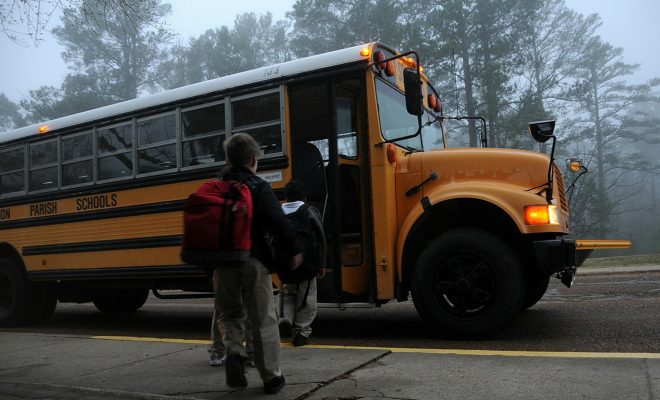3 Ways to Revolutionize STEM education in the United States

We need to revolutionize STEM education in the United States. Why? According to the STEM (Science Technology, Engineering and Math) Coalition, there are 26 million STEM jobs in the U.S., comprising 20 percent of all jobs. By 2020, there will be 9.2 million STEM jobs in the U.S. Despite the need for these workers, only 45 percent and 30 percent of high school seniors are prepared for college-level math and science courses, respectively.
Because of this, a greater focus on science, technology, engineering and math (STEM) learning has been a “trend” for at least the better part of a decade. This is another area where President Obama has weighed in. It is no longer enough for American students to just get by in comparison to each other in STEM subjects; global competition is proving that students in the U.S. need more focus in these subjects to lead the worldwide marketplace as adults. This year, expect teachers as early as pre-K to start putting as much emphasis on STEM learning as reading and letter formation.
In this article, we’ll discuss three ways we are revamping STEM education in the United States:
Here are three ways we are revamping STEM education in the United States:
- Through technology: As the American K-12 system continues to look for ways to increase student interest and aptitude in STEM learning, technology is playing an increasingly pivotal role. Children who come to classrooms today have an inherent aptitude for technology and educators should encourage that skill set with resources that integrate STEM learning.
Teachers are looking for innovative ways to deliver STEM material. For example, thanks to virtual laboratories, a student can do an experiment multiple times, and learn from mistakes in real-time and make adjustments. It also means that experiments are not limited to a determined class time and can be done on a student’s schedule. With in-class mobile devices, a student with a tablet or smartphone in hand has a portal to hundreds of apps that support STEM learning.
- With a focus on computer science: It’s estimated that in the next decade the number of computer science jobs in the U.S. will outnumber qualified people by 1 million. That’s 1 million jobs for the taking that Americans will miss out on because of inadequate skill sets. Despite this, only 10 percent of K-12 schools have computer science programs.
To meet the computer science job demand, K-12 schools will need help from outside partners. This could come in the form of area businesses willing to donate needed technology to make more classes happen or curriculum partnerships with groups like Code in the Schools. If every computer science classroom tries to re-invent the wheel, a lot of time and resources are wasted. So asking for help is the first step.
There also needs to be a larger focus on computer science at a younger age. This does not just mean computers and mobile devices available in K-12 classrooms but should include lessons on the “how” of the technology. The site Code.org has basic coding activities for children as young as Kindergarten – so teachers should be taking advantage of these resources. Waiting until middle or high school is simply too long to wait to spark an interest in K-12 students in computer science.
- By getting girls interested in STEM from an early age. Special attention should be paid to getting young women interested in STEM courses. Research tells us that girls are just as adept as boys at learning STEM topics, computer science included, but their interest tends to drop off in late elementary or middle school.
Over twice as many boys in high school take computer science advanced placement tests than girls every year. It is not uncommon for the boys at STEM high schools to outnumber the girls by three to one. Yet the Bureau of Labor Statistics reports that the job outlook in STEM fields is expected to grow at double the rate of other fields. The jobs of today, and the future, are in science, technology, engineering and math. Girls need the encouragement to seek out these career paths that may not seem appealing in the socially-centric middle school years.
Obviously, this is not an exhaustive list of what we can do to improve STEM education in our country. What do you think are some ways to prepare our students better for these demanding careers?






